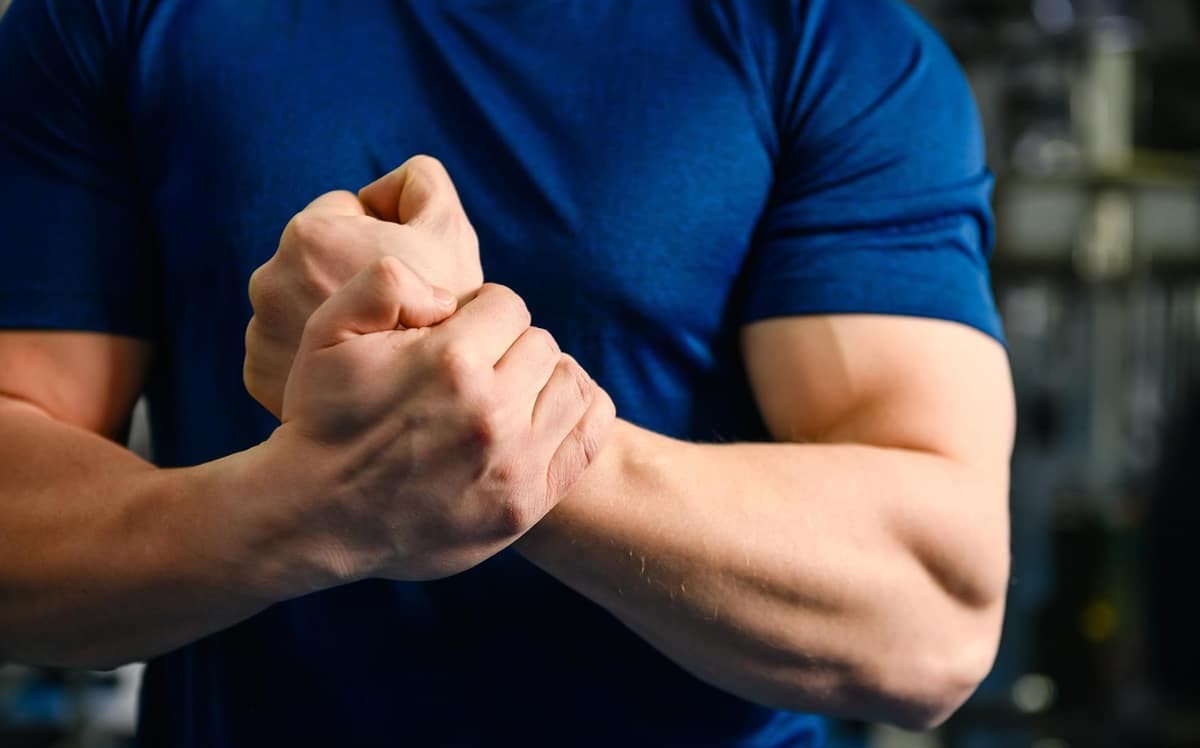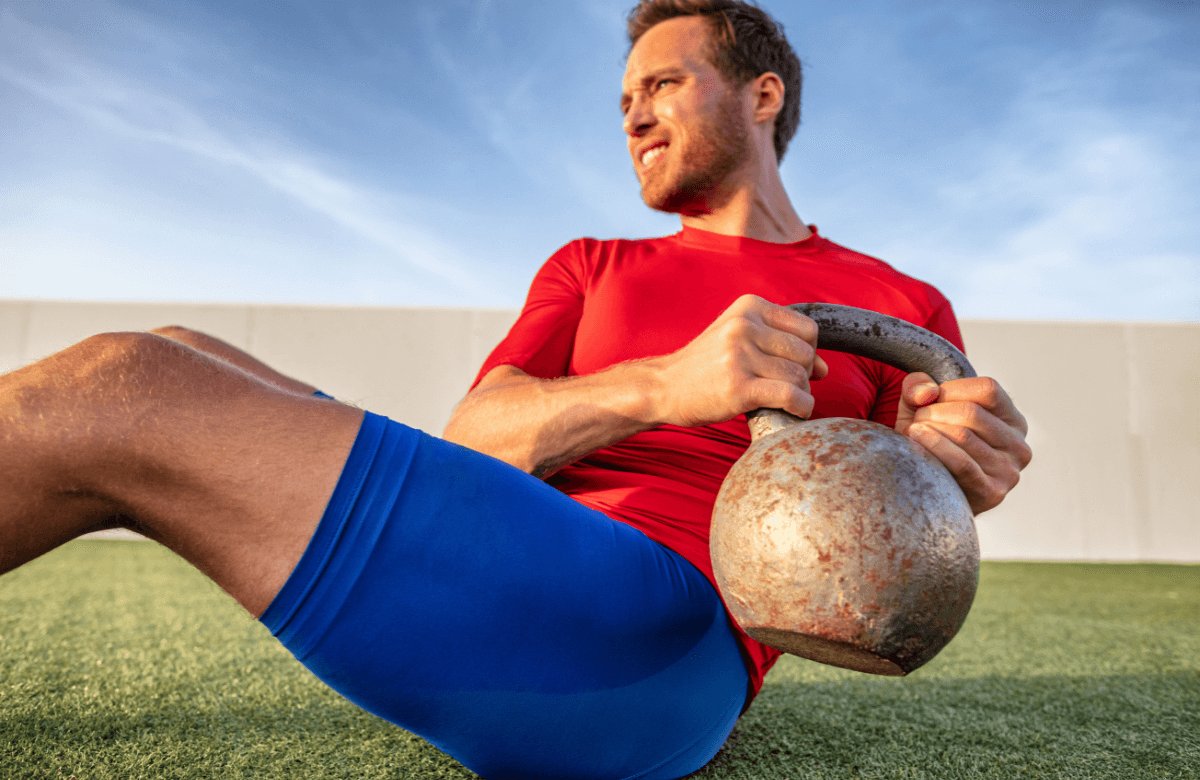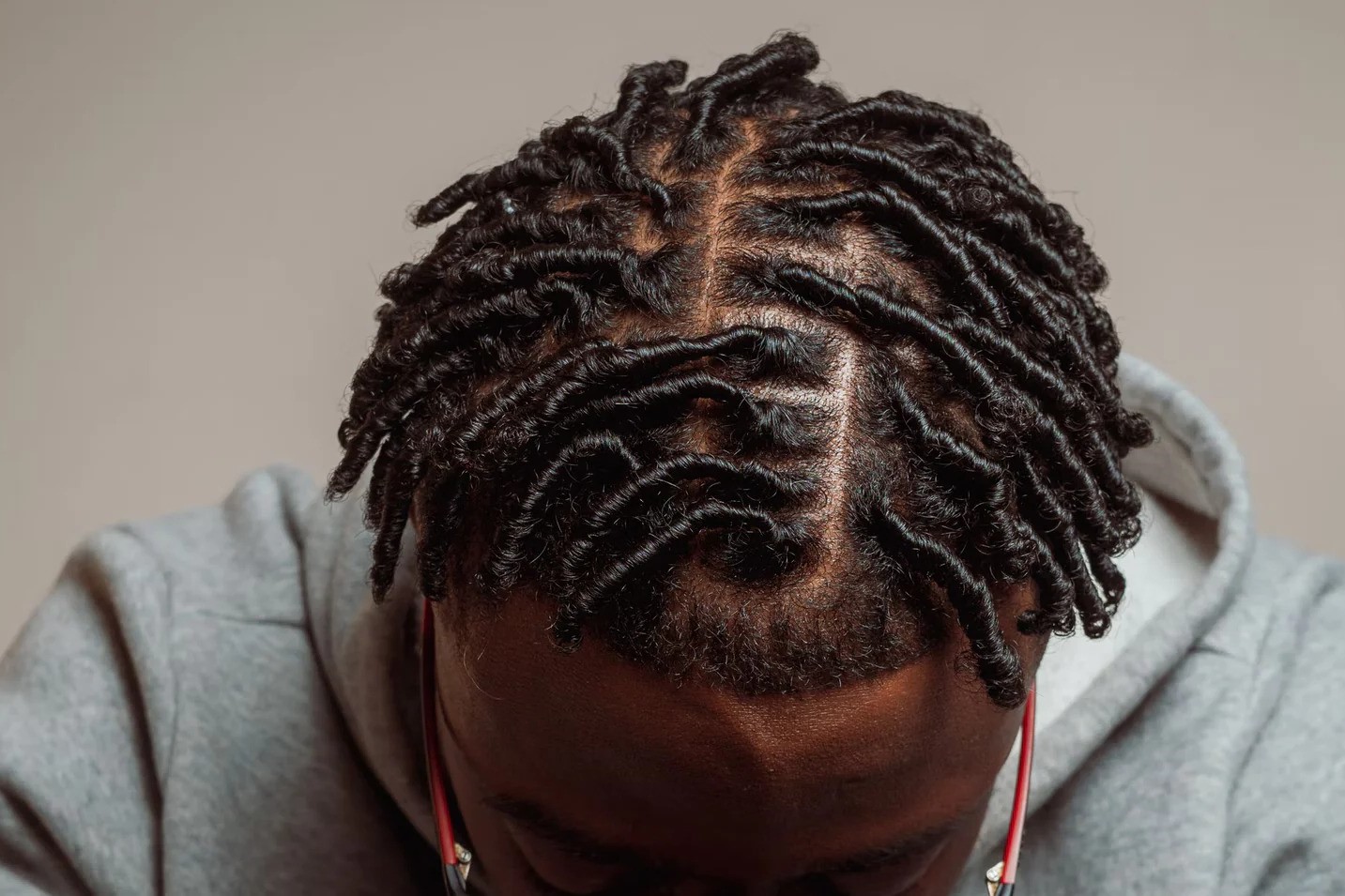Home>Health and Wellness>How To Get Bigger Wrists


Health and Wellness
How To Get Bigger Wrists
Modified: March 2, 2024
Learn effective exercises and tips for achieving bigger wrists and improving your overall health and wellness. Discover how to build strength and size in your wrists safely and effectively.
(Many of the links in this article redirect to a specific reviewed product. Your purchase of these products through affiliate links helps to generate commission for Noodls.com, at no extra cost. Learn more)
Table of Contents
Introduction
When it comes to fitness and bodybuilding, much attention is often given to developing larger muscles in the arms, chest, and legs. However, one area that is frequently overlooked but equally important is the wrists. While the wrists may seem small in comparison to other muscle groups, they play a crucial role in various exercises and daily activities. Strong and well-developed wrists not only enhance overall physical performance but also contribute to a balanced and symmetrical physique.
In this comprehensive guide, we will delve into the often-neglected topic of wrist development. We will explore the anatomy of the wrist, the significance of wrist strength and size, effective exercises to increase wrist size, and the role of proper nutrition in supporting wrist growth. Whether you are an athlete, a fitness enthusiast, or someone looking to improve their overall strength and functionality, understanding how to enhance wrist size and strength can significantly impact your physical well-being.
Join us as we uncover the secrets to achieving bigger, stronger wrists and discover the transformative impact it can have on your fitness journey.
Read more: How To Get Bigger Hands
Understanding the anatomy of the wrist
The wrist is a complex joint that connects the hand to the forearm. Comprised of a delicate interplay of bones, ligaments, tendons, and muscles, the wrist is essential for a wide range of movements, from simple daily tasks to intricate athletic maneuvers. Understanding the intricate anatomy of the wrist is crucial for anyone seeking to enhance its strength and size.
The wrist consists of eight carpal bones, which form two rows at the base of the hand. These bones are arranged in a precise and intricate manner, allowing for flexibility and stability. The carpal bones are connected to the radius and ulna of the forearm by ligaments, forming the radiocarpal joint, which enables the up-and-down movement of the hand. Additionally, the joint between the carpal bones and the metacarpal bones of the hand allows for side-to-side movement, crucial for activities such as gripping and twisting.
Ligaments play a vital role in stabilizing the wrist joint, preventing excessive movement that could lead to injury. The ligaments of the wrist are arranged in a complex network, providing support while allowing for a wide range of motion. Furthermore, the tendons of the wrist connect the muscles of the forearm to the bones of the hand, facilitating movement and providing strength.
Muscles also play a significant role in the anatomy of the wrist. The muscles of the forearm, including the flexor and extensor muscles, control the movement of the wrist and fingers. These muscles work in harmony to produce a wide array of movements, from flexing and extending the wrist to gripping and rotating the hand.
Understanding the intricate interplay of bones, ligaments, tendons, and muscles within the wrist provides valuable insight into the complexity of this crucial joint. By gaining a deeper understanding of the anatomy of the wrist, individuals can better appreciate the importance of targeted exercises and proper nutrition in promoting wrist strength and size.
Importance of wrist strength and size
The significance of wrist strength and size extends far beyond mere aesthetics. While a well-defined and robust wrist can certainly enhance the overall appearance of the arms, its importance transcends cosmetic appeal. Wrist strength and size play a pivotal role in various physical activities, from everyday tasks to athletic endeavors. Understanding the multifaceted importance of developing strong and sizable wrists sheds light on the profound impact it can have on overall physical well-being.
Enhanced Functional Performance
Strong wrists are essential for executing a myriad of movements, such as lifting, pushing, pulling, and gripping. Whether engaging in weightlifting, rock climbing, or even performing routine household chores, wrist strength is a fundamental component of functional performance. A sturdy grip, facilitated by robust wrists, not only enhances one's ability to handle objects effectively but also reduces the risk of slippage or injury during physical activities.
Injury Prevention
Weak wrists are more susceptible to injury, particularly during activities that involve repetitive or forceful movements. Adequate wrist strength and size contribute to the stability and resilience of the joint, reducing the likelihood of strains, sprains, and other wrist-related injuries. By fortifying the muscles, ligaments, and tendons surrounding the wrist, individuals can safeguard themselves against the potential repercussions of overexertion or sudden impacts.
Read more: How To Measure Wrist Size
Support for Upper Body Exercises
In the realm of fitness and bodybuilding, wrist strength is integral to the execution of various upper body exercises. Whether performing bench presses, push-ups, or overhead presses, the wrists act as a crucial link between the arms and the weight being lifted. Insufficient wrist strength can limit one's ability to lift heavier weights and may lead to compensatory movements that place undue stress on other joints and muscles. By cultivating robust wrists, individuals can optimize their performance in a wide range of upper body exercises, thereby promoting balanced muscular development.
Overall Symmetry and Proportion
While the wrists may seem inconspicuous in comparison to larger muscle groups, their size and strength contribute to the overall symmetry and proportion of the body. Well-developed wrists complement the arms and shoulders, creating a harmonious aesthetic that reflects balanced physical conditioning. Furthermore, proportional wrist size can enhance the visual appeal of the hands and forearms, adding a polished and refined dimension to one's physique.
In essence, the importance of wrist strength and size encompasses functional performance, injury prevention, support for upper body exercises, and overall aesthetic appeal. By recognizing the multifaceted significance of cultivating strong and sizable wrists, individuals can embark on a journey to enhance their physical capabilities and achieve a well-rounded and balanced physique.
Exercises to increase wrist size
Developing larger wrists requires targeted exercises that engage the muscles, tendons, and ligaments surrounding the wrist joint. By incorporating specific movements that promote strength and hypertrophy, individuals can effectively increase the size and robustness of their wrists. Here are several exercises tailored to enhance wrist size and strength:
1. Wrist Curls
Wrist curls are a fundamental exercise for targeting the forearm flexor muscles, which play a pivotal role in wrist strength and size. To perform wrist curls, sit on a bench or chair and hold a dumbbell with an underhand grip. Rest your forearms on your thighs with your wrists extending beyond your knees. Slowly lower the weight towards the floor by extending your wrists, then curl the weight back up by flexing your wrists. Aim for controlled movements and focus on feeling the contraction in your forearms.
Read more: How To Use Wrist Straps
2. Reverse Wrist Curls
Reverse wrist curls target the extensor muscles of the forearm, contributing to balanced wrist development. Similar to wrist curls, this exercise involves holding a dumbbell, but with an overhand grip. Rest your forearms on your thighs and allow your wrists to extend beyond your knees. Lift the weight by extending your wrists upward, then lower it back down in a controlled manner. Engaging in reverse wrist curls helps fortify the extensor muscles, promoting overall wrist stability and size.
3. Farmer's Walk
The farmer's walk is a functional exercise that not only enhances grip strength but also stimulates wrist and forearm development. To perform this exercise, hold a heavy dumbbell in each hand and walk for a designated distance. The weight of the dumbbells places a substantial demand on the wrists and forearms, prompting muscular adaptation and growth. Focus on maintaining an upright posture and a firm grip throughout the duration of the walk.
4. Plate Pinch
Plate pinch exercises are an effective way to target the muscles responsible for gripping and holding objects. Simply hold two weight plates together, smooth sides facing out, and pinch them between your fingers and thumb. Lift the plates off the ground and hold them for a set duration, focusing on exerting pressure through your fingers and thumbs. Plate pinch exercises not only bolster wrist strength but also contribute to the development of hand and finger muscles.
5. Wrist Roller
Utilizing a wrist roller is an excellent method to enhance wrist and forearm strength. Attach a weight to a rope or a bar, then roll the weight up and down by winding and unwinding the rope or bar with your wrists. This exercise effectively targets the muscles and tendons surrounding the wrist joint, promoting muscular endurance and hypertrophy.
Incorporating these exercises into a well-rounded training regimen can yield significant improvements in wrist size and strength. It is essential to perform these exercises with proper form and gradually increase the resistance to stimulate ongoing muscular adaptation. By consistently engaging in targeted wrist exercises, individuals can cultivate larger, more resilient wrists, enhancing their overall physical prowess and functional capabilities.
Read more: How To Make Keyboard Bigger On IPhone
Proper nutrition for wrist growth
Proper nutrition plays a pivotal role in supporting muscular development and overall physical well-being, including the growth and strength of the wrists. By incorporating nutrient-dense foods and strategic dietary practices, individuals can provide their bodies with the essential building blocks necessary for optimal wrist growth and recovery.
Protein-Rich Foods
Protein is a fundamental component for muscle growth and repair, making it essential for promoting wrist development. Incorporating lean sources of protein such as chicken, turkey, fish, eggs, and legumes into one's diet provides the necessary amino acids to support the growth and repair of wrist muscles and connective tissues. Additionally, including high-quality protein supplements, such as whey or plant-based protein powders, can further augment protein intake, facilitating wrist hypertrophy.
Omega-3 Fatty Acids
Omega-3 fatty acids, found in fatty fish, flaxseeds, chia seeds, and walnuts, possess anti-inflammatory properties that can aid in reducing joint inflammation and supporting overall joint health, including the wrists. By incorporating omega-3 rich foods into their diet, individuals can mitigate the risk of joint discomfort and promote an optimal environment for wrist growth and recovery.
Complex Carbohydrates
Complex carbohydrates serve as a primary energy source for intense physical activities and resistance training, providing the fuel necessary for muscular exertion. Whole grains, sweet potatoes, quinoa, and oats are excellent sources of complex carbohydrates that can sustain energy levels during wrist-focused workouts, enabling individuals to perform exercises with adequate intensity and duration to stimulate wrist growth.
Read more: How To Apply KT Tape To Your Wrist
Hydration
Proper hydration is often overlooked but is crucial for supporting overall muscular function and recovery, including the wrists. Adequate water intake is essential for maintaining optimal joint lubrication and promoting nutrient transport to the muscles and connective tissues. Staying well-hydrated supports wrist health and facilitates the repair and growth processes following intense training sessions.
Micronutrient-Rich Foods
Incorporating a variety of fruits and vegetables into one's diet ensures an adequate intake of essential vitamins and minerals that contribute to overall joint health and muscular function. Nutrient-dense foods such as leafy greens, berries, citrus fruits, and bell peppers provide an array of vitamins and minerals, including vitamin C, vitamin K, and potassium, which play a role in supporting joint integrity and muscular function.
By prioritizing a well-rounded and nutrient-dense diet that encompasses lean proteins, omega-3 fatty acids, complex carbohydrates, adequate hydration, and micronutrient-rich foods, individuals can create an optimal nutritional environment for promoting wrist growth and resilience. Coupled with targeted exercises, proper nutrition serves as a foundational element in maximizing wrist development and supporting overall physical performance.
Conclusion
In conclusion, the quest for bigger wrists goes beyond mere aesthetics; it encompasses functional performance, injury prevention, support for upper body exercises, and overall symmetry and proportion. Understanding the intricate anatomy of the wrist provides valuable insight into the complexity of this crucial joint, highlighting the importance of targeted exercises and proper nutrition in promoting wrist strength and size.
By incorporating specific movements such as wrist curls, reverse wrist curls, farmer's walks, plate pinches, and wrist rollers, individuals can effectively increase the size and robustness of their wrists. These exercises engage the muscles, tendons, and ligaments surrounding the wrist joint, promoting strength and hypertrophy. Furthermore, proper nutrition, including lean proteins, omega-3 fatty acids, complex carbohydrates, adequate hydration, and micronutrient-rich foods, creates an optimal environment for promoting wrist growth and resilience.
The multifaceted importance of cultivating strong and sizable wrists extends to various physical activities, from everyday tasks to athletic endeavors. Strong wrists are essential for executing a myriad of movements, such as lifting, pushing, pulling, and gripping, while also reducing the risk of slippage or injury during physical activities. Additionally, wrist strength is integral to the execution of various upper body exercises, contributing to balanced muscular development and overall aesthetic appeal.
In essence, the journey to achieving bigger, stronger wrists involves a holistic approach encompassing targeted exercises, proper nutrition, and a deep understanding of the wrist's intricate anatomy. By recognizing the multifaceted significance of wrist strength and size, individuals can enhance their physical capabilities, safeguard themselves against potential injuries, and achieve a well-rounded and balanced physique.
Embarking on this transformative journey not only enhances physical performance but also fosters a deeper appreciation for the often-overlooked role of the wrists in overall strength and functionality. With dedication, consistency, and a comprehensive approach, individuals can unlock the potential for bigger, stronger wrists, ultimately elevating their fitness journey and overall well-being.











